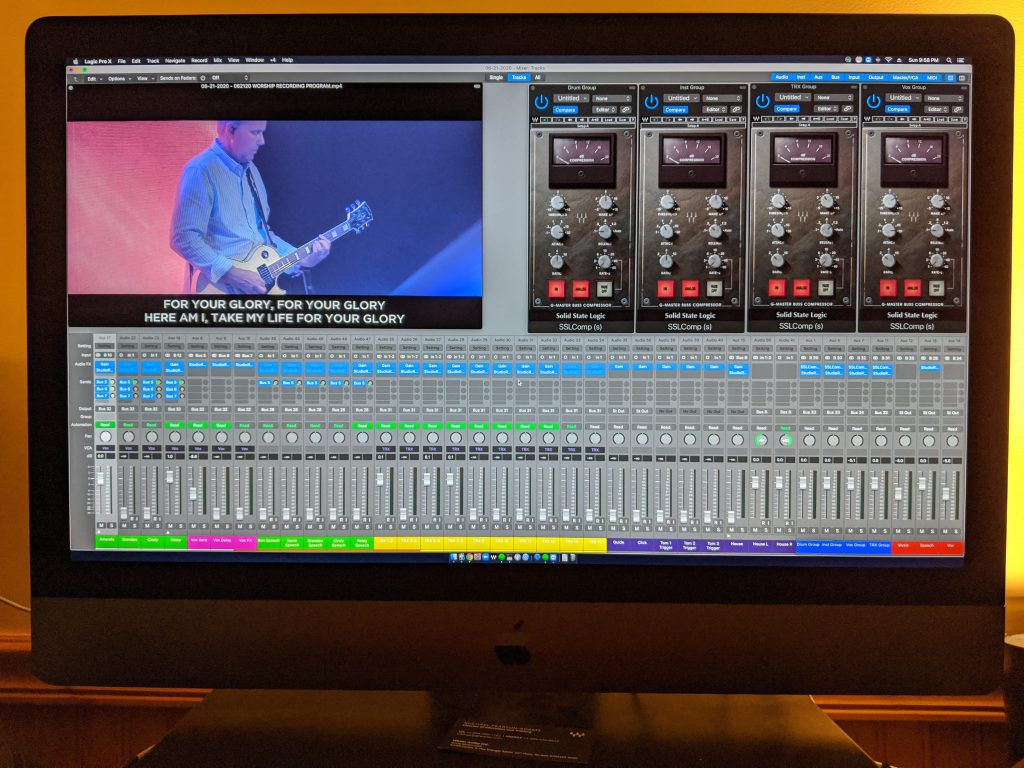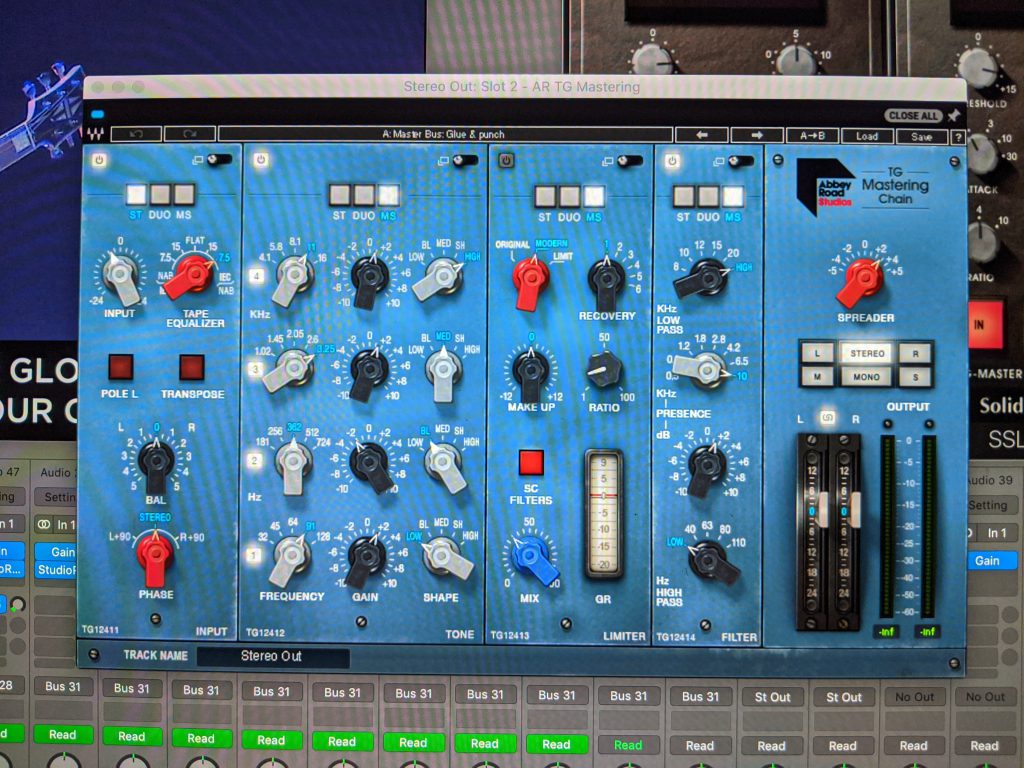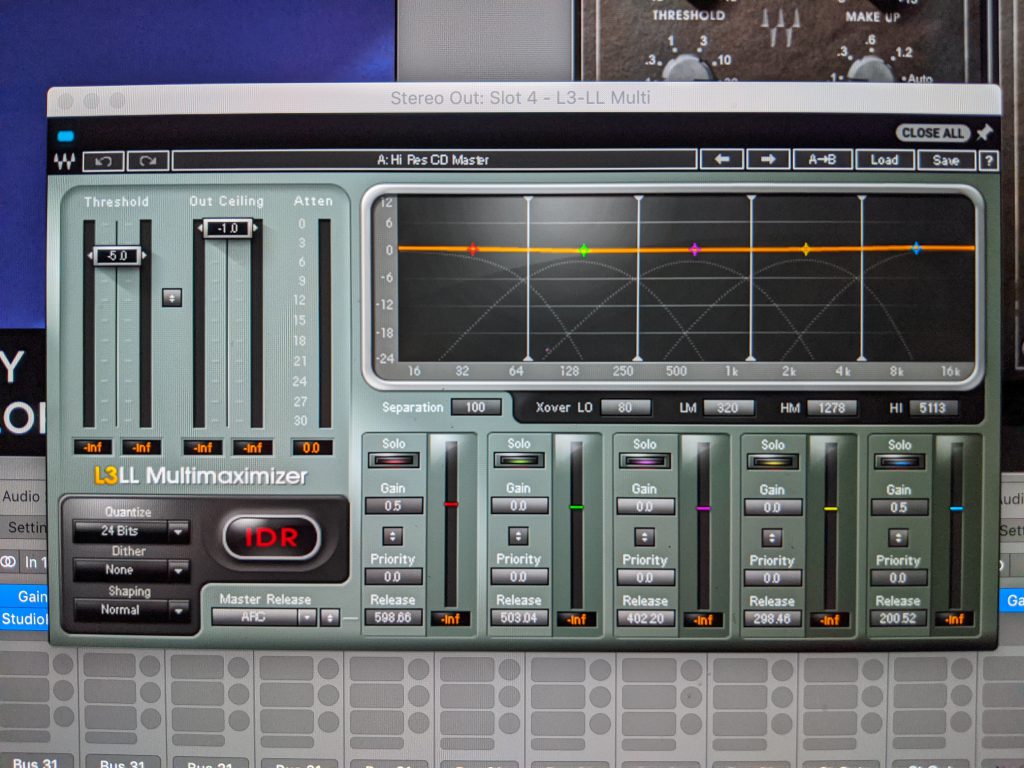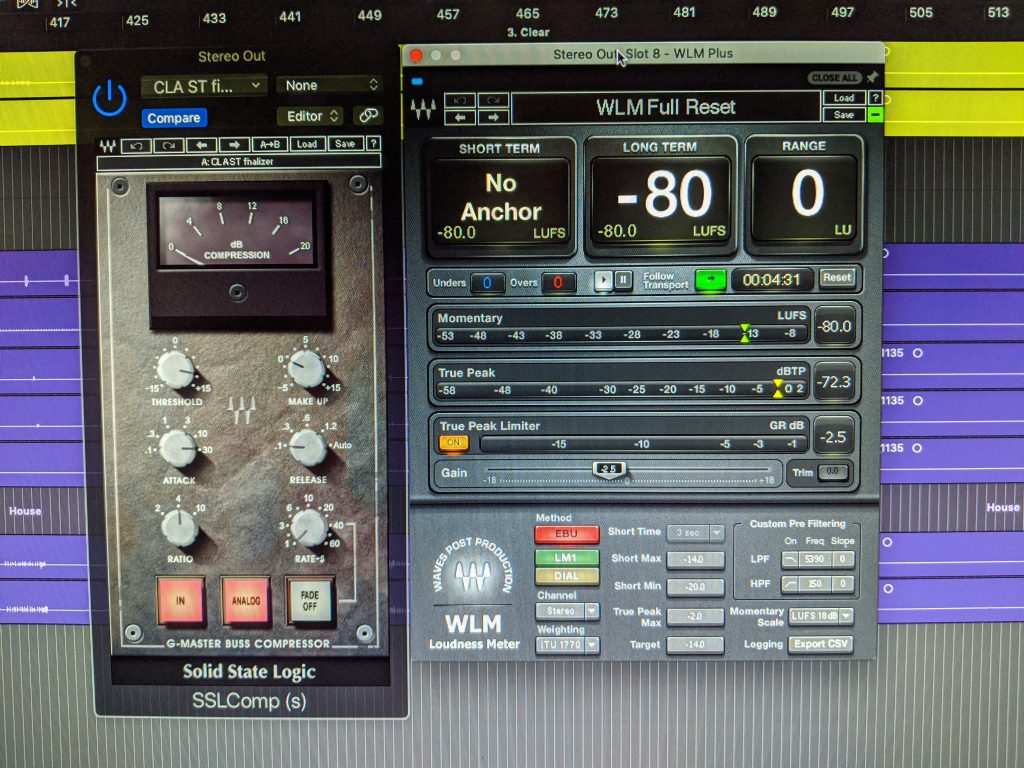It’s week 5 here at Studio.Stage.Live and we are in the middle of our series on making broadcast mixes. These posts are far from perfect and not super detailed for a reason. As I’ve hopefully made clear by now, this series aims to help you lay the framework for your broadcast mixing and give you some concrete steps to work through with the hopes of helping you develop a consistent process that you can follow each time you mix and really fall into a groove of quality products. So far we’ve talked about my processes for recording, ingest, dynamics processing and mixing (Week 1 – Recording, Week 2 – Ingest, Week 3 – Processing, Week 4 – Mixing). This week it’s all about my major busses and master buss. Let’s get right to it!
After I’ve developed and spent some time refining it, I’ll literally get comfortable and sit back and just listen to things as they stand. I also listen to speaking parts that are mixed in as I can to make sure things feel right level wise. However, the biggest thing I do is bring in the broadcast rough edit (just the video feed from the screens before our video director has gone through and fine tuned). I do this so that I can be sure that everything I see I can hear. More than a few times I’ve been watching/listening through and caught something that I need to fix. This also provides an important chance for me to listen the entire way through a song, which if things go well, may not have happened until now for every song (I’ll usually set dynamics with the loudest and softest songs only for speed knowing fine tuning will happen later). Also, taking a break, if there is time, can be helpful here as well. Remember ear fatigue is a thing so if you’re in a time crunch, just try and take 15 minutes an hour and rest your ears. While your watching, try to have your buss compressors pulled up as well (the SSL buss compressor doing light work is really all I run on group busses). You should be able to hear plugins over-working but sometimes they get missed and as your ears get tired you may not be able to pick that out so I’ll pull up at least my 4 major buss compressors up and make sure they are behaving during the play-through. I’ll show you a picture of my screen layout for my mastering passes so you can get an idea of what I’m talking about.
This has been the most frequently asked question I get asked…what’s on your master buss? Well, I have news for you, it’s not as cool as you might think. I try to really do my best to keep things stupidly simple and have as few duplicate tasks as possible. Right now the chain looks like this: SSL Buss Compressor, Abbey Road Mastering Chain, H-EQ, L3 Multimaximizer, and the L3 Ultramaximizer. Each has a specific purpose and when I first started things were quite different but the longer I’ve been at this, the more I’ve learned to really hone in on what these plugins do the best and really refine those. We use the SSL Buss compressor to help glue everything together (it’s really not working too hard here, no more than 3db at any given time with a slow release, pictured with the WLM Meter below). The Abbey Road plugin is doing some tape saturation, mid-side EQ, filtering, and of course the spreader is on! Note, we aren’t doing any compression with this plugin, in my experience it got a bit heavy handed which is why we brought in the SSL compressor. The H-EQ is cutting some mids out and adding some air to the mix post compression which has had a significant impact (if you don’t have something like this on your chain, just try it, you’ll thank me later). I know you’ll see the curve I use in mine but keep in mind, my setup should be a template for you, always take the time to dial it in on your own with your own content. Also, less can be more when it comes to the master buss. My curve is the result of previous EQ/dynamics choices so yours should look different. Lastly I have the successive L3s. In the past I’ve always loved putting a multiband compressor in front of a single band compressor to really refine things. I tried that here and that has really helped. The multiband allows me to do my limiting with some dynamic shape and the final L3 does the heavier limiting and also does my quantizing down to 16 bit (audio standard our video team is using, if I have to break it down to 16 bit, I’d rather do it with my specialized plugin then allow premiere to bork it all up!).
The last two things I’m really looking into at this stage are my PAZ-Analyzer (graphically shows stereo width and phase) and WLM (both of which sit after all of the plugins listed above). While we aren’t pushing for super wide super produced music (going for more of a live broadcast feel) these two tools allow me to keep an eye on things globally. In the studio, my ears are incredibly important but since things are so much more critically heard I’ve found it’s really important to make every tool available for use in order to monitor and mix your project. With WLM, all you need to know is the LUFS that your broadcasting medium asks for. In our case we are streaming straight to YouTube. Their limiter kicks in at -13db LUFS so I set my goal to be -14 (which is something I see a lot of creators doing as well) and the peak limiter to -1 (makes sure to really get those rogue hits). The biggest thing you can do is research and research and research. Each streaming service is different so make sure you know what your service is asking for and be sure to send that because if you don’t, you can bet they will be adjusting your mix on the fly and not as cleanly as you’d hope. The best thing you can do is listen to your mix through your provider and make sure it sounds the same because if it doesn’t, it’s likely you need to adjust on your master buss.
Well that’s it for this week. Hopefully I’ve given you some creative ideas to try in your setup. If I created more questions than I answered please don’t hesitate to reach out to me below or on Facebook. I love touching base with you guys! If you’ve liked the series so far, be sure to subscribe to my blog so you can be notified when new posts go live (usually every monday). Well next week I’ll be going over what I think may be the most important step in this whole process which is “farming it out.” The peer review process, at least for me, has really helped me step up my game and make sure I’m putting out good stuff each time I bounce a mix. Until next week, happy mixing!







